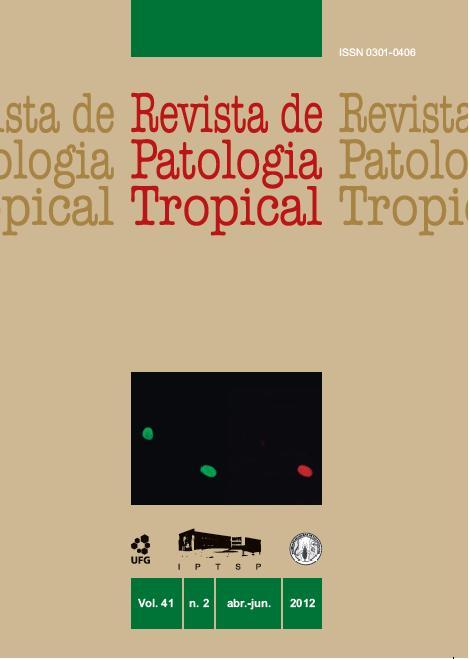Mechanisms of the larvicidal effect of diflubenzuron on Aedes aegypti larvae, as evidenced by ultrastructural changes
DOI:
https://doi.org/10.5216/rpt.v41i2.19326Keywords:
Aedes aegypti, Diflubenzuron, Ultrastructure, Midgut.Abstract
Dengue is a viral disease transmitted by Aedes aegypti in over 100 countries in the intertropical band in the world and the main forms of control are antivectorial actions. In this paper, ultrastructural changes caused by diflubenzuron (DFB) are presented. The experiments were performed with 3rd instar larvae of Ae. aegypti with DFB at concentrations of 0.1 and 1 ?g/mL. After 24h of exposure, larvae were collected, fixed, dehydrated, embedded, cut, contrasted with uranyl acetate and 3% lead citrate and examined under the electron microscope. Ultrastructural alterations caused by the diflubenzuron inhibitory activity were observed in the cuticle and in the midgut of Ae. aegypti larvae treated with 0.1 and 1 ?g/mL, for 24 hours. The alterations observed by scanning microscopy included higher number of bristles, which were thinner and longer than the controls and exhibited a coiling pattern in the intersegmental grooves. Transmission electron microscopy analysis revealed that the epicuticle almost came entirely off the new epicuticle and had no points of reinforcements commonly found in the control. The midgut cells of the larvae treated with diflubenzuron presented a spongy skeleton and in the ultrathin sections, the cells showed intense vacuolation and damage, however with secretion vesicles present and mitochondria preserved. These studies indicate that the diflubenzuron can also actin the midgut cells, being a promising product for use in Ae. aegypti control. This study showed that the DFB interferes with the process of ecdysis, prevents the release of the old cuticle that accumulates in the intersegmental spaces and strangle the segmental portions in a successive and cumulative process, blocked the changes, causing the death of the larva. It also acts destroying the midgut cells.
Downloads
Downloads
How to Cite
Issue
Section
License
The manuscript submission must be accompanied by a letter signed by all authors stating the full name and email address, confirming that the material has not been published or is under consideration for publication elsewhere, and agreeing to transfer copyright in all media and formats for Journal of Tropical Pathology. The authors will not be paid for published articles. They are solely responsible for the content of those articles, even if the Editor holds the right to adjust them to the norms of the journal.
The reviewers will not be paid for the peer review process.

